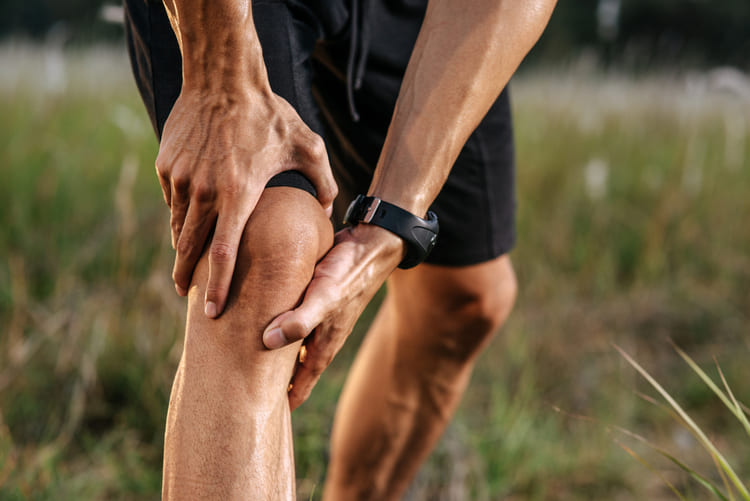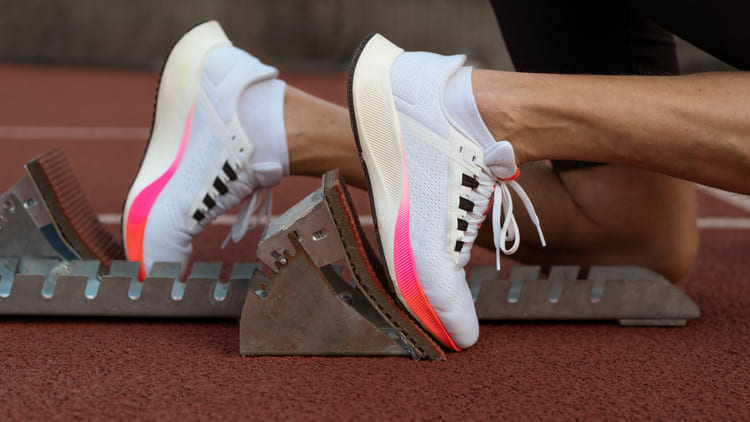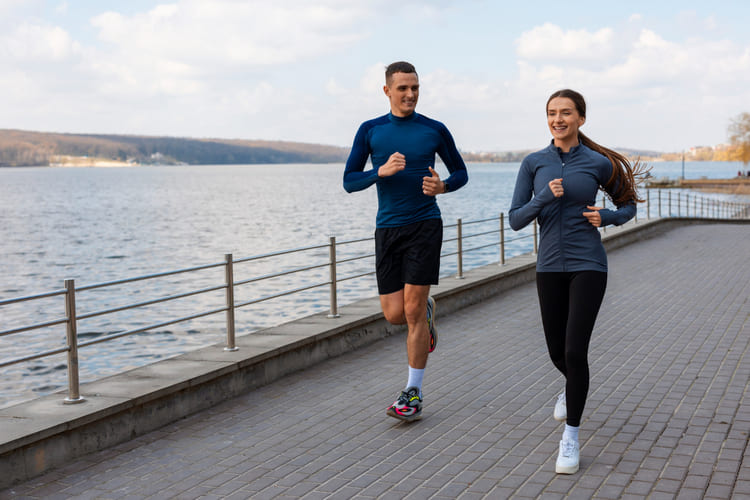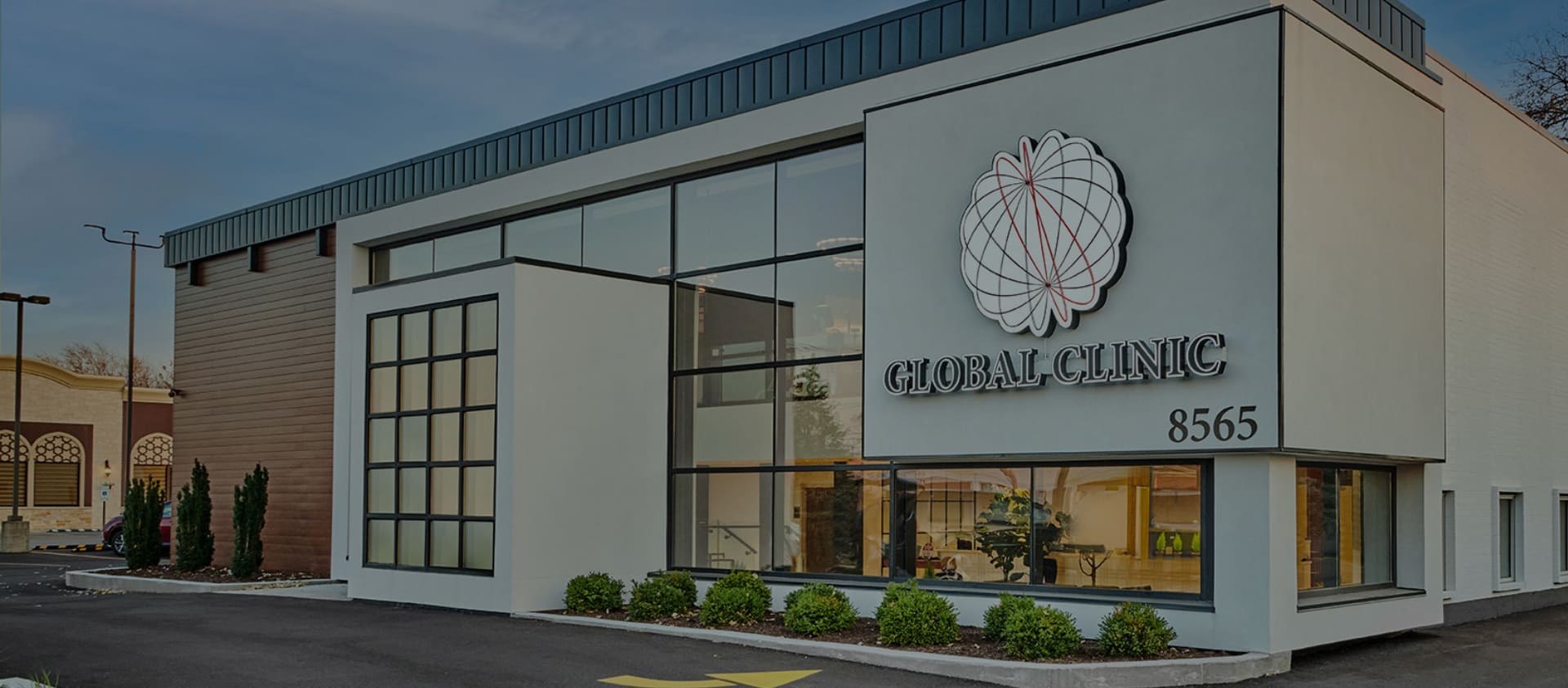Knee pain strikes without warning, transforming routine activities into challenging tasks. From climbing stairs to simply standing up, the discomfort can significantly limit your mobility and quality of life. Millions struggle with this issue daily, searching for solutions that actually work rather than temporary fixes that mask the underlying problem.
In this guide, we will learn how to relieve knee pain effectively through strategies ranging from simple at-home techniques to professional interventions.

Understanding Knee Pain
Your knee absorbs forces up to five times your body weight during activity. This complexity makes it vulnerable to various issues:
- Osteoarthritis: Worn cartilage creates painful bone friction
- Tendinitis: Overworked tendons become inflamed and irritated
- Ligament injuries: Stretched or torn bands that normally stabilize the joint
- Meniscus tears: Damaged cushioning discs between bones
- Bursitis: Swollen fluid sacs that typically reduce friction
Moreover, the precise spot where you feel discomfort often reveals what’s happening beneath the surface.
- Front pain: Typically signals kneecap issues or irritated quadriceps tendons
- Pain behind knee: Could indicate hamstring problems, fluid-filled cysts, or cartilage damage
- Side discomfort: Often stems from ligament issues or irritated tissue bands
Pinpointing your pain helps narrow down both causes and targeted solutions.
Immediate Relief Strategies
Rest and Activity Modification
When your knee protests, listen. Skip movements that trigger pain—running, deep squats, lengthy walks. This doesn’t mean complete inactivity; rather, swap problematic movements for gentler alternatives that maintain circulation without aggravating the injury. Think of it as pressing pause, not shutting down entirely.
Ice Therapy
For fresh injuries or sudden flare-ups, cold works magic. Wrap ice in a thin cloth (direct application damages skin) and apply it to the painful spot for 15-20 minutes. This approach numbs nerve signals while reducing swelling. Apply several times daily during the first 48-72 hours after injury or when inflammation spikes. The cooling effect brilliantly tackles that initial phase.
Heat Therapy
After acute inflammation settles, pivot to heat. A warm compress or heating pad boosts circulation and relaxes tight muscles pulling on your knee. Apply for 15-20 minutes before activity to prime stiff joints for movement. Heat particularly shines for morning stiffness or chronic muscle tension around the joint.
Over-the-Counter Medications
Non-prescription relievers provide breathing room while addressing root causes. Ibuprofen, naproxen, and aspirin combat both pain and inflammation, while acetaminophen addresses pain without tackling swelling. Mind the dosage instructions—extended use can trigger stomach or liver issues. View these as supporting players, not the lead role, in your knee pain relief approach.
Effective Exercises for Knee Pain Relief
Strengthening & Stability Exercises
Strong muscles surrounding the knee joint provide crucial support, reducing pressure on damaged areas. These exercises for knee pain focus on building strength without aggravating symptoms:
- Straight Leg Raises: Strengthen quadriceps while minimizing knee movement
- Wall Sits: Build strength through isometric contraction
- Step-Ups: Improve functional strength for daily activities
Start with 10-12 repetitions of each exercise, gradually increasing as strength improves.
Stretching for Flexibility
Tight muscles pull on the knee joint, exacerbating pain. Regular stretching addresses this issue:
- Hamstring Stretch: While seated, extend one leg, reach toward toes, holding for 30 seconds
- Calf Stretch: Stand facing wall, extend one leg back, press heel down, feel stretch in calf
- Quadriceps Stretch: Standing, pull foot toward buttocks, feeling stretch along front thigh
Hold each stretch 30 seconds without bouncing, repeating 2-3 times per side.
Low-Impact Exercises
Maintaining activity without stressing damaged knees remains crucial for recovery. These good exercises for knee pain allow continued fitness without worsening symptoms:
- Swimming: Provides resistance while water buoyancy supports joints
- Cycling: Strengthens muscles with minimal impact, using appropriate seat height
- Walking: Accessible exercise that builds endurance when done on suitable surfaces
Begin with 10-15 minutes and gradually extend duration as comfort allows.
Lifestyle Adjustments for Long-Term Relief

Weight Management
Every extra pound adds four times that force to your knees with each step. Even modest weight reduction dramatically decreases this pressure—losing just 10 pounds can mean 40 pounds less force hammering your knees with every footfall. This simple mathematics explains why weight management often provides substantial knee pain relief without any other interventions.
Proper Footwear
The wrong shoes cascade problems up your entire kinetic chain. Footwear with proper arch support, cushioning, and stability features corrects alignment issues that stress knees. Replace athletic shoes every 300-500 miles, as worn-out support structures stop protecting your joints. For serious issues, consider custom orthotics designed for your specific foot mechanics.
Activity Modification
Smart substitutions preserve fitness while protecting knees. Replace high-impact activities like running with gentler alternatives. Modify movements that cause pain—for instance, partial squats instead of deep ones or recumbent cycling rather than upright cycling. Small adjustments to everyday movements likewise reduce cumulative stress: using handrails on stairs, rising from chairs with arm support, and avoiding prolonged kneeling.
Advanced Pain Management Techniques
Injection Therapies
When conservative measures fall short, injectable treatments may help:
- Corticosteroid injections reduce inflammation for temporary relief
- Hyaluronic acid injections supplement natural joint fluid for improved cushioning
- Platelet-rich plasma (PRP) utilizes your own blood components to promote healing
These options typically provide several months of symptom improvement when administered by qualified practitioners specializing in knee pain treatment.
Surgical Interventions
For severe cases, surgical procedures restore function:
- Arthroscopy: Minimally invasive procedure to remove damaged tissue
- Partial knee replacement: Resurfacing damaged portions while preserving healthy areas
- Total knee replacement: Replacing the entire joint when extensively damaged
Modern techniques have dramatically improved recovery times and outcomes for these procedures.
Alternative Therapies
Complementary approaches often enhance conventional treatment:
- Acupuncture: Fine needles stimulate specific points to relieve pain
- Massage therapy: Reduces muscle tension affecting knee mechanics
- Therapeutic ultrasound: Deep heat increases circulation to damaged tissues
Many patients benefit from integrating these options into a comprehensive pain management strategy.
When to Seek Professional Help
Persistent or Severe Pain
While mild discomfort might resolve with home care, seek medical evaluation for:
- Pain lasting longer than two weeks despite rest and self-care
- Inability to bear weight on the affected leg
- Significant swelling or redness
- Pain that disrupts sleep consistently
The Global Clinic offers specialized evaluation to determine appropriate intervention when symptoms persist.
Physical Therapy Referral
Physical therapists provide targeted rehabilitation through:
- Comprehensive assessment of movement patterns
- Personalized knee pain relief exercises addressing specific deficiencies
- Manual therapy techniques to improve joint mobility
- Progressive strengthening programs that evolve as you improve
This guided approach often accelerates recovery beyond what self-directed exercise achieves.
Advanced Treatment Options
When conservative approaches prove insufficient, further options include:
- Specialized bracing to stabilize the joint
- Regenerative medicine techniques
- Nerve blocks for severe pain
- Minimally invasive procedures before considering major surgery
Each option offers distinct benefits depending on your specific condition and goals.

Your Personalized Recovery Journey
Knee healing rarely follows a straight line. Successful recovery typically involves combining several strategies tailored specifically to your situation, lifestyle, and underlying causes.
Begin with foundational approaches—appropriate rest, temperature therapy, gentle movement—then build outward, incorporating more targeted interventions as needed. Track your response to different techniques.
Remember that knee tissues heal according to their own biological timeline, not your schedule. Improvement often happens incrementally rather than overnight. For guidance crafted specifically for your unique situation, contact us to connect with specialists who can help navigate your optimal path forward.

